Old classic games are being re-released in all sorts of ways today: Virtual Console, miniature consoles, unlockable bonuses, and even mix-tape-esque compilations. Many of these re-releases have subtle changes that few will ever notice, like flash reduction and brightness changes:
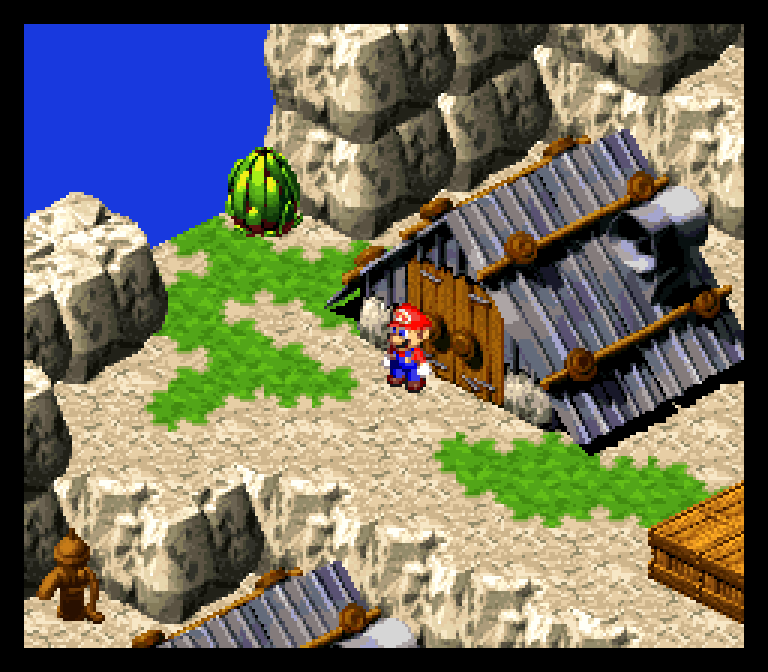 | 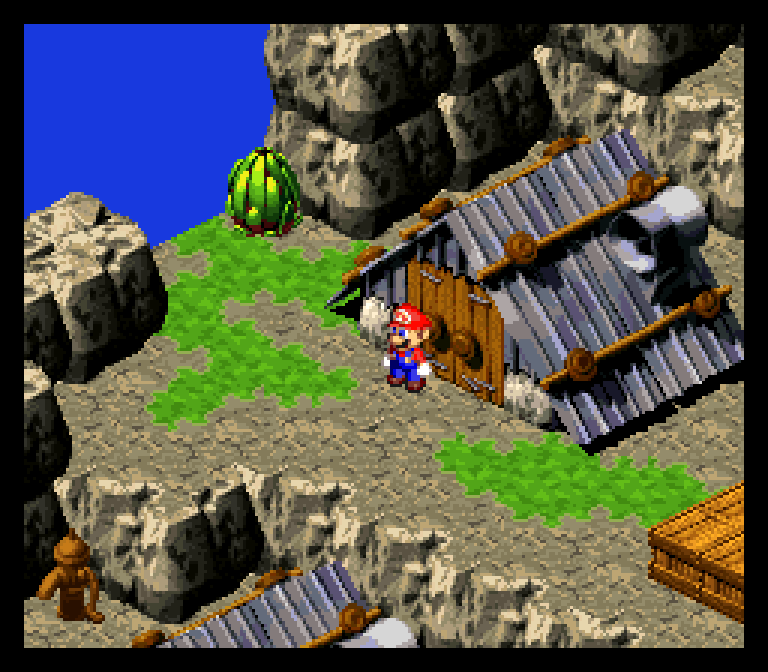 |
| Super Mario RPG (Super NES, 1996) | Super Mario RPG (Wii U Virtual Console, 2016) |
These aren’t the only changes that are made to re-released classics, though – sometimes script translations undergo minor changes too. So let’s take a look at three recent examples that not many people know about.
1. The Legend of Zelda: Link’s Awakening DX
The old broom lady in Link’s Awakening DX used to say “YAHOO!” throughout the game – so much so that it was her iconic phrase. In the Virtual Console release, however, all her “YAHOO!”s were changed:
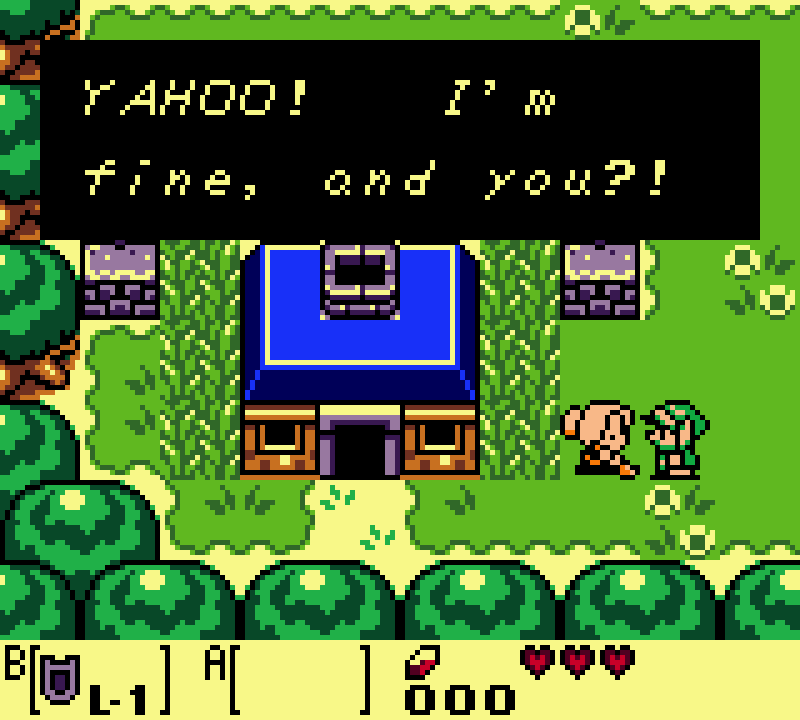 | 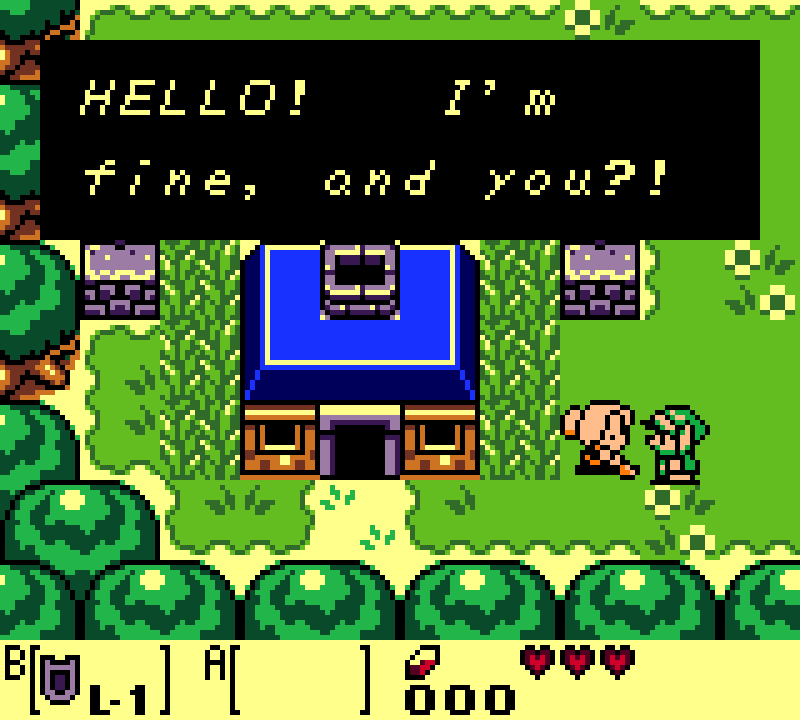 |
| Game Boy Color version (1998) | 3DS Virtual Console version (2011) |
Presumably, this change was made because “YAHOO!” – including the all-caps spelling and the exclamation mark at the end – has since become a giant global corporation and household name.

Other examples of “YAHOO!” being replaced include:
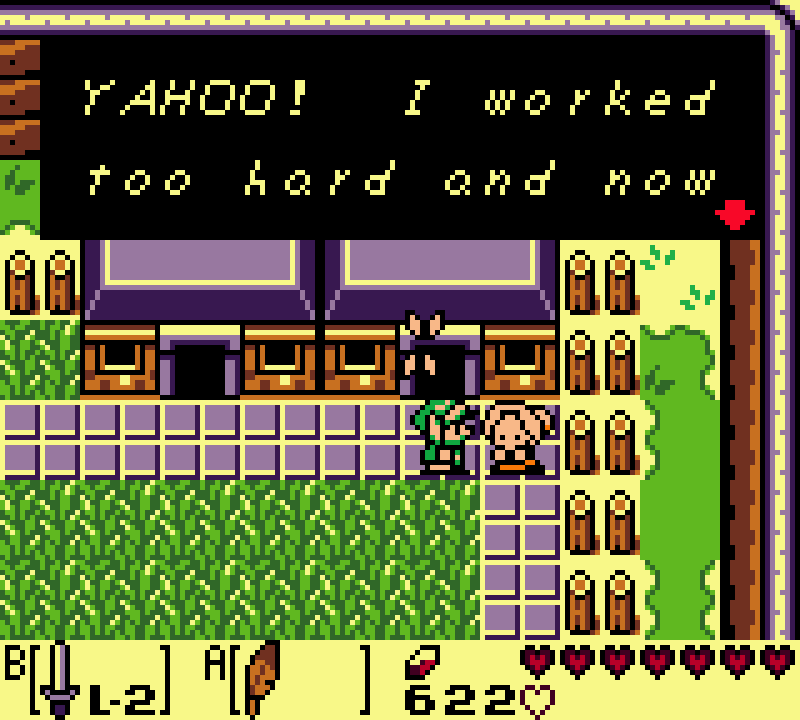 | 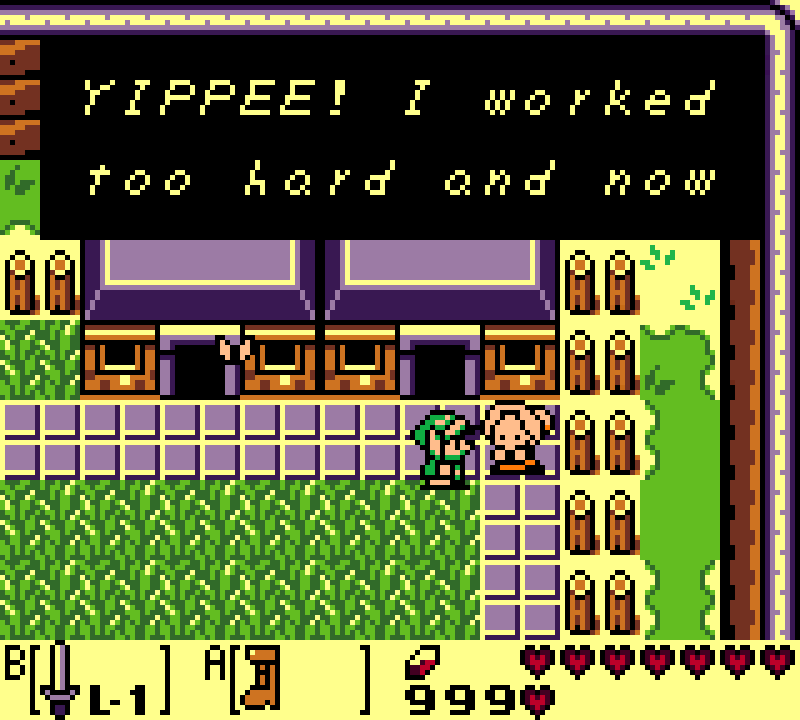 |
| Game Boy Color version (1998) | 3DS Virtual Console version (2011) |
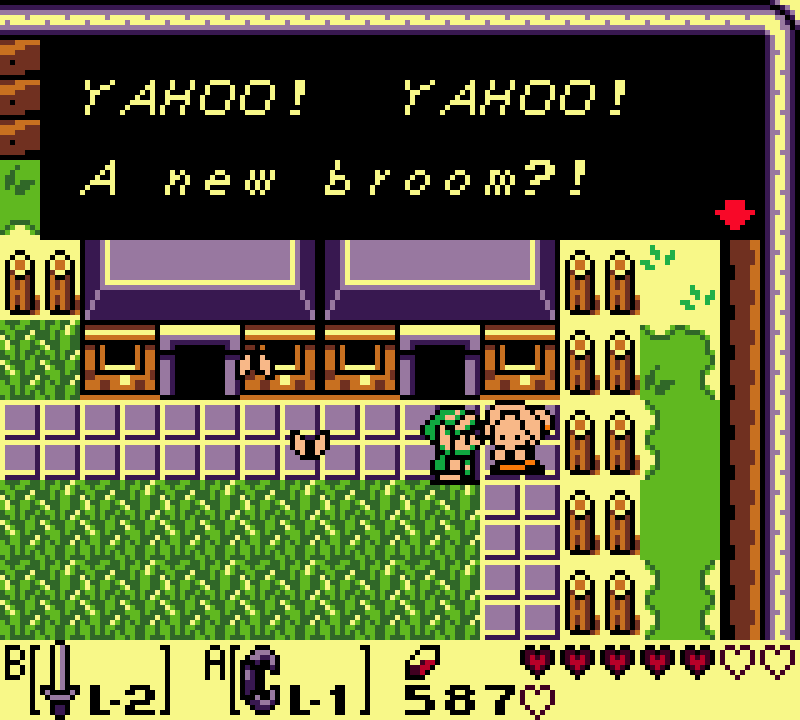 | 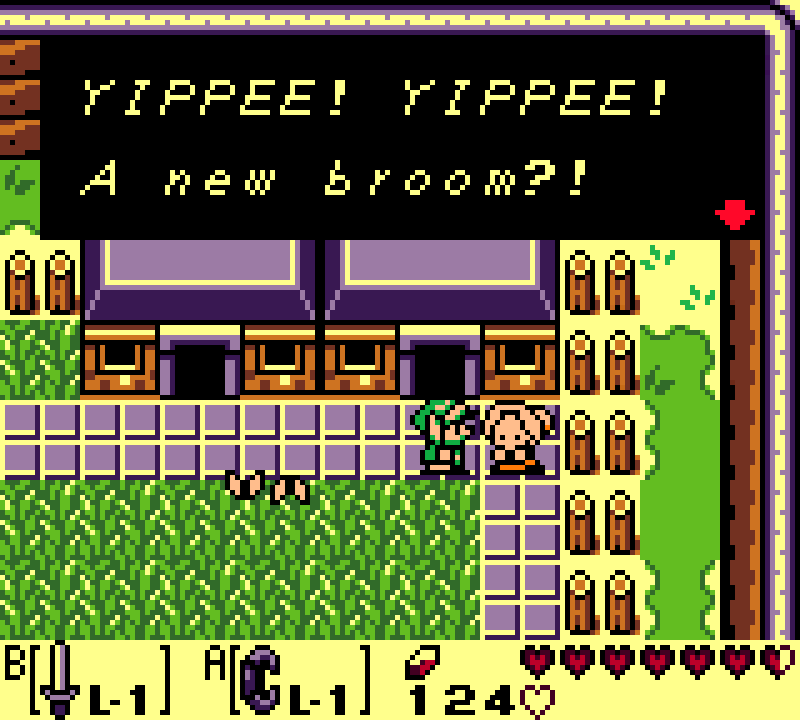 |
| Game Boy Color version (1998) | 3DS Virtual Console version (2011) |
 |  |
| Game Boy Color version (1998) | 3DS Virtual Console version (2011) |
Update
In 2019, Nintendo released a remake of Link’s Awakening for the Switch. The English translation of this new version puts all of the old “YAHOO!”s back in:
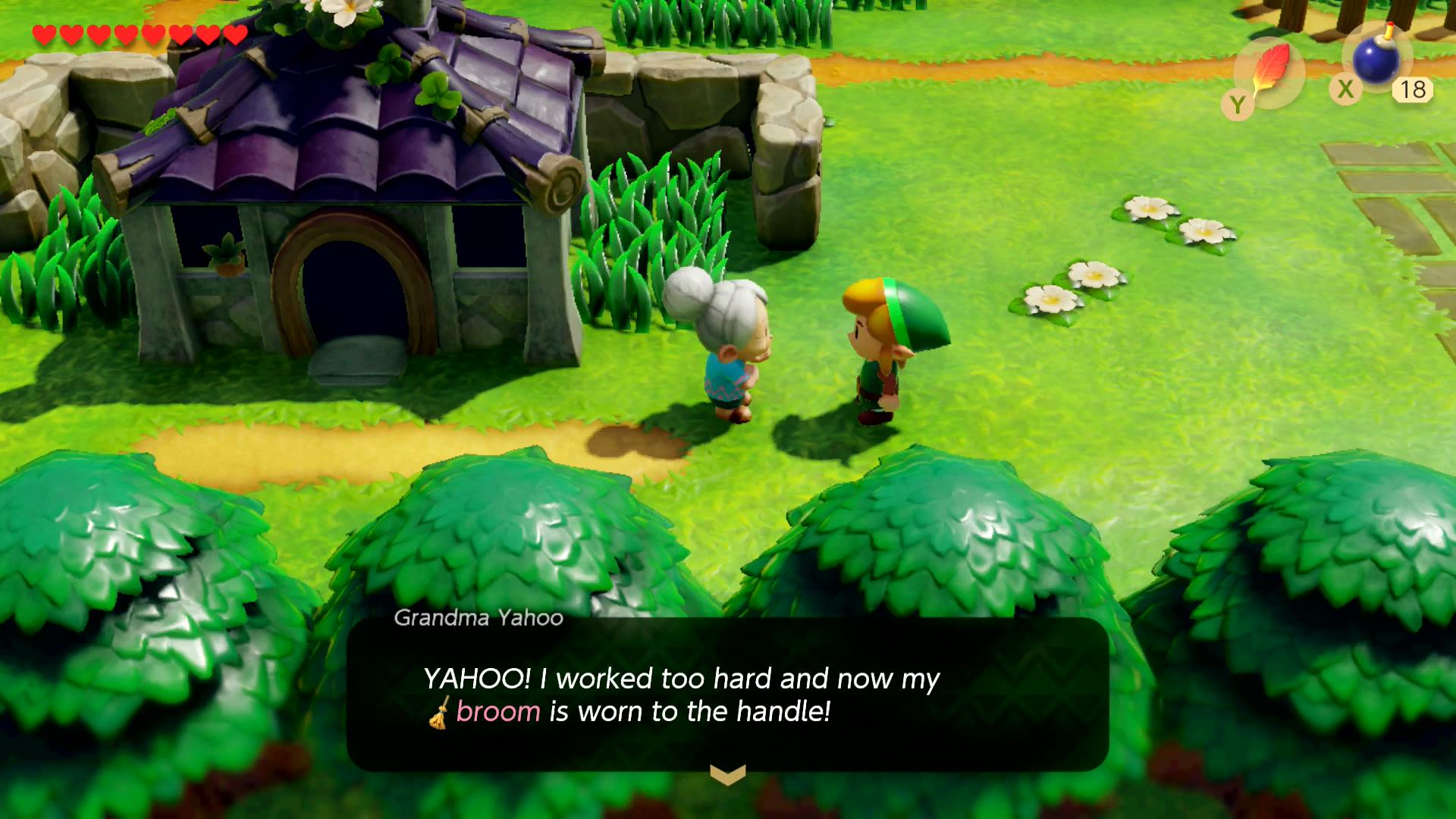
Based on this, it appears that “YAHOO!” was problematic for someone at Nintendo of America during the Virtual Console era, but is no longer a concern today. I wonder what changed.
2. The Legend of Zelda
Speaking of Zelda, the NES Classic Edition of the very first game in the series had some changes of its own. For example, it took Nintendo 30 years, but they finally fixed the famous “penninsula” typo in Level 1:
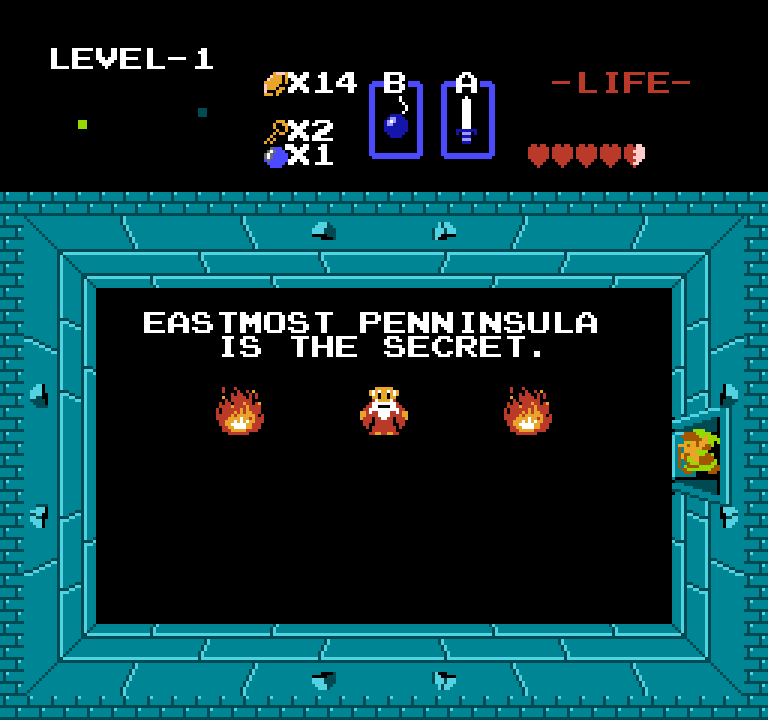 | 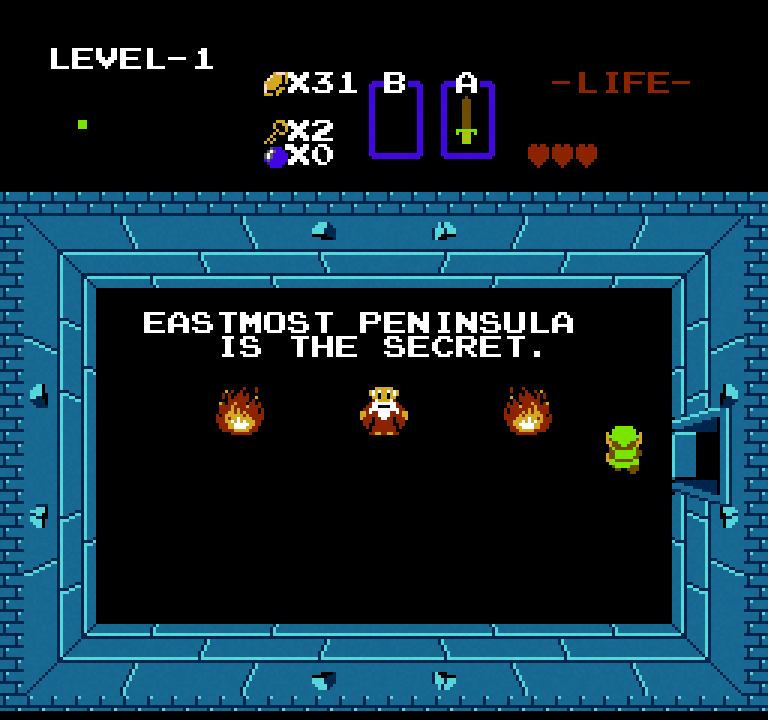 |
| NES version (1987) | NES Classic Edition version (2016) |
The Legend of Zelda is actually a great example of how games change little by little over time without being noticed. If you’re interested, I cover the topic in more detail in my book about Zelda’s translation. You can also see more details about the NES Classic Edition changes here.
3. Breath of Fire II
This classic JRPG had several sections of data changed for its Virtual Console release. Two of these changes involved the game’s translated text.
First, someone changed the word “damn” to “darn” before the game’s re-release:
 |  |
| Super NES version (1995) | Wii U Virtual Console version (2013) |
The second change is related to an optional mini-game. It’s described in the original translation as being “kind of like Othello”. The problem is that “Othello” is a trademarked name that’s also had legal disputes in recent years. So the mention was removed from the script entirely:
 | 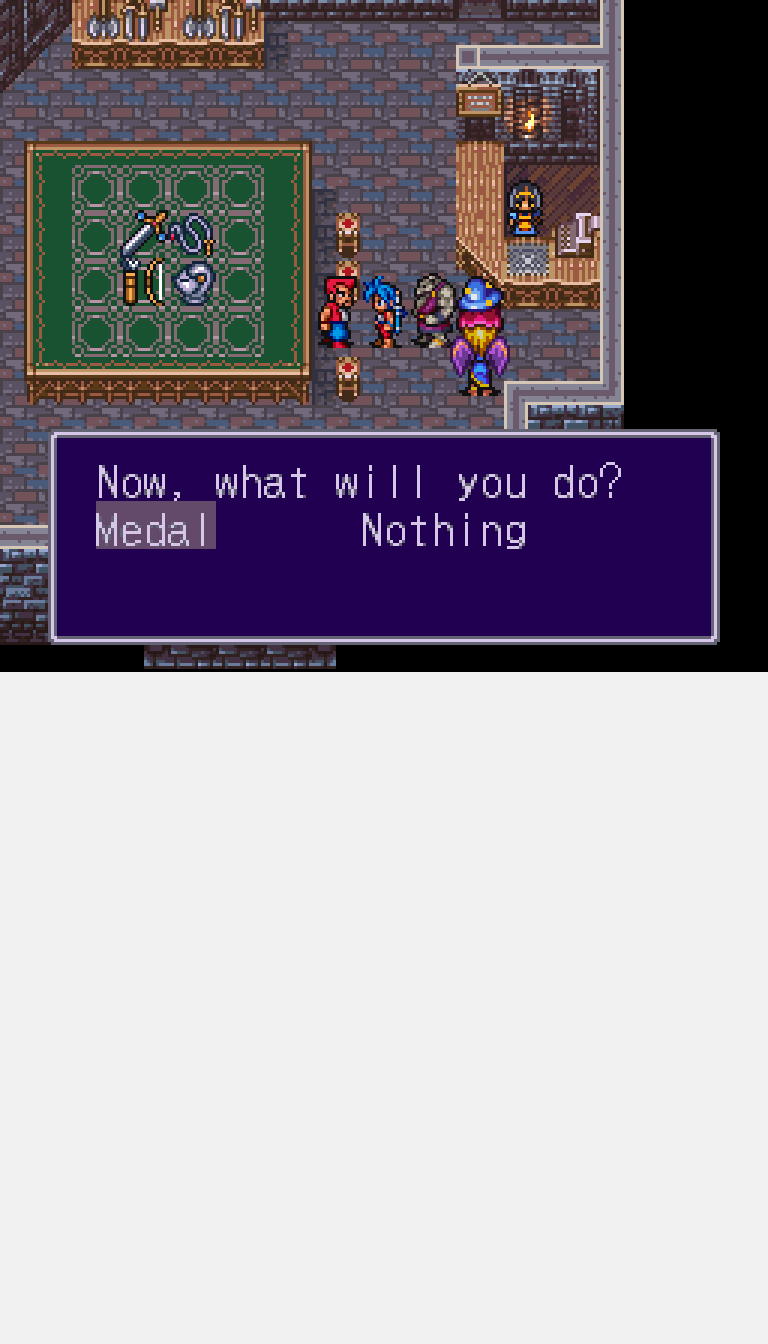 |
| Super NES version (1995) | Wii U Virtual Console version (2013) |
Other Games
These aren’t the only examples of altered re-release translations, of course – I’ve heard that the European Virtual Console version of Super Mario RPG updated the script to replace the word “bugger” with “pest”, and I’ve heard faint rumors that Shining Force II might’ve had some dialogue changes. Then there are the more mundane changes involving references to peripherals that aren’t supported in re-released games.
In all, these re-released games undergo a surprising amount of changes. For example, the Super NES Classic Edition comes with 21 games built into it – and 20 of them have been modified in some way. And at least 9 of the games in the NES Classic Edition have changes too. Re-releases are changed so often that I now assume each re-release has changes by default whenever I do technical research for my books and articles. Of course, few of these changes matter to the average player, but as the changes pile up it starts to feel like how movies get updated over and over until they “feel” different from their original release.
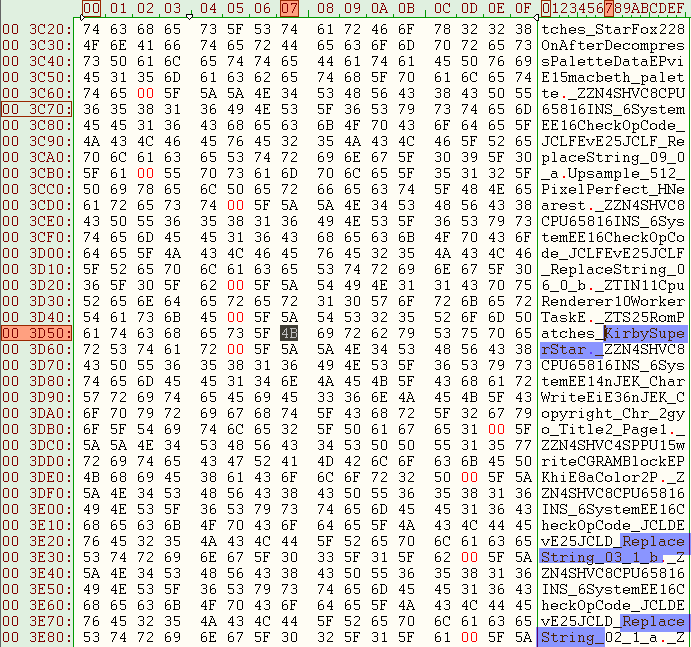
Looking for More
Unfortunately, changes like the examples above aren’t very well-documented, so it’s hard to know everything that gets changed with each re-release unless a really dedicated fan dives into millions of 1s and 0s of each game. Still, if you’re interested in how other games have changed little by little over time, I highly recommend The Cutting Room Floor – there were so many different little changes in Super Mario World for example, and did you know the Japanese version of Battletoads was heavily changed and made easier?
I’d love to make a more complete, on-going list of translation changes someday, so I’m always on the lookout for more examples like the ones above. So if you know of any others or someday discover some new changes in your favorite game’s text, definitely let me know in the comments below!


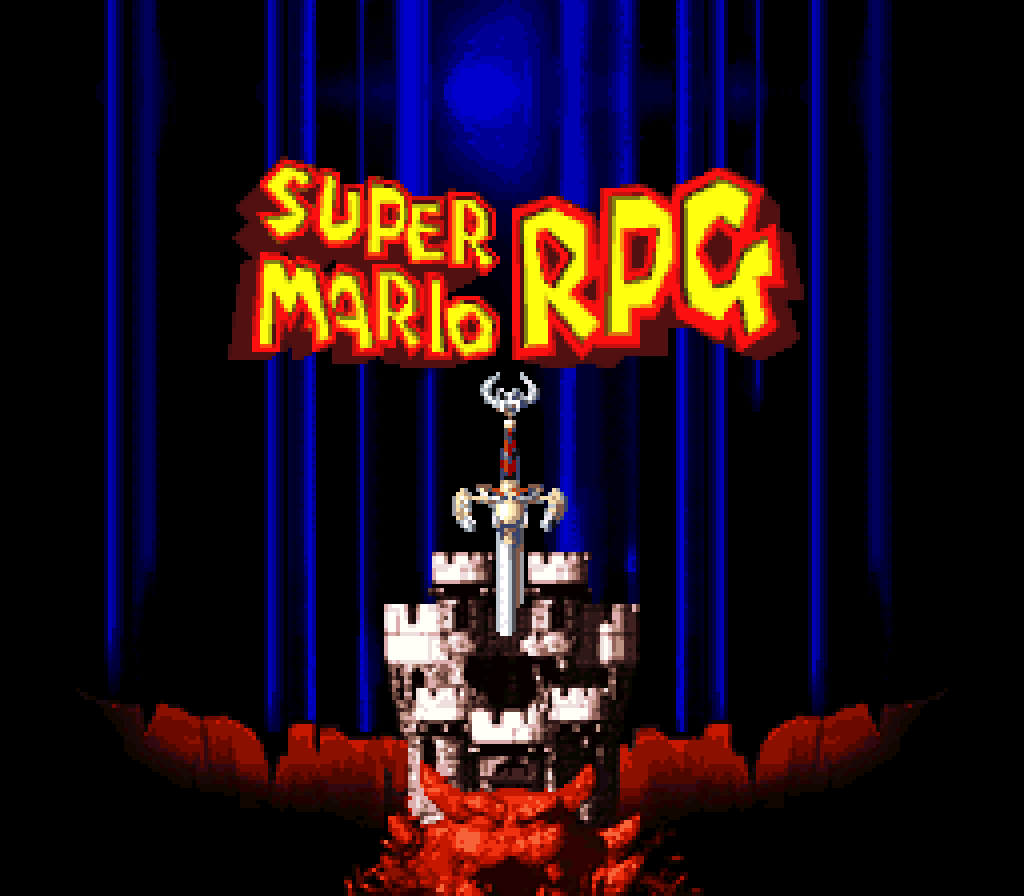
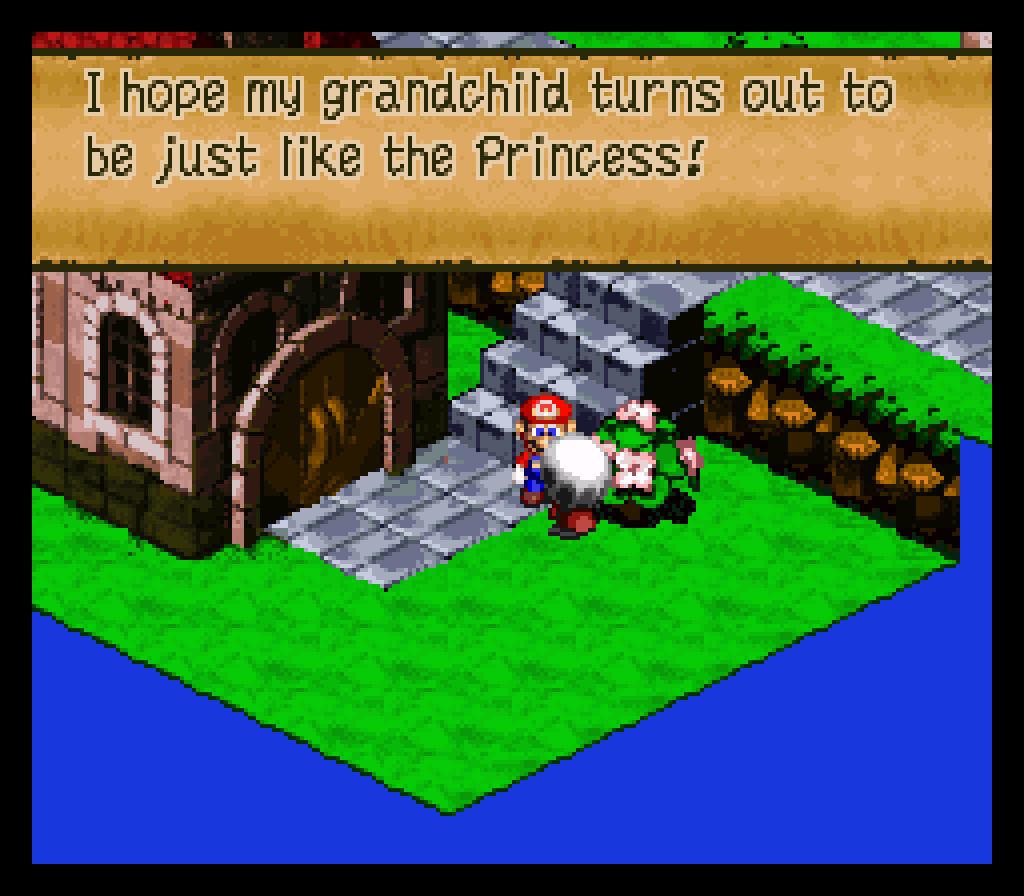

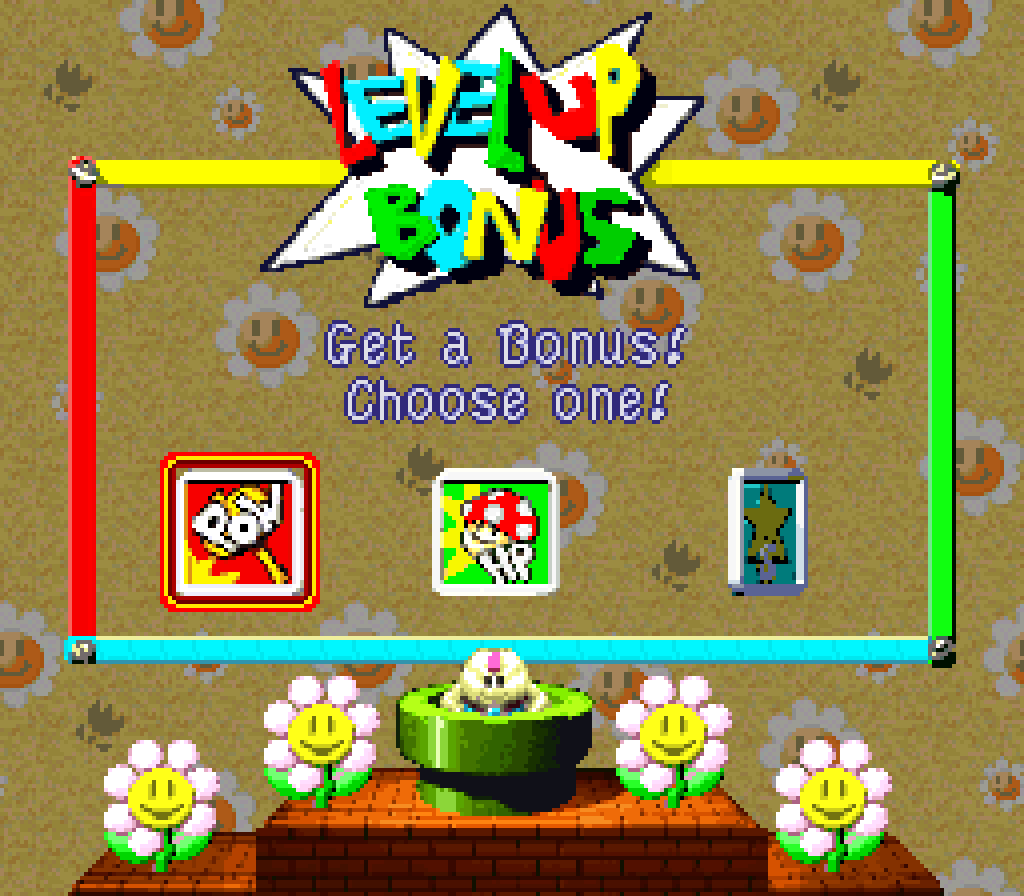
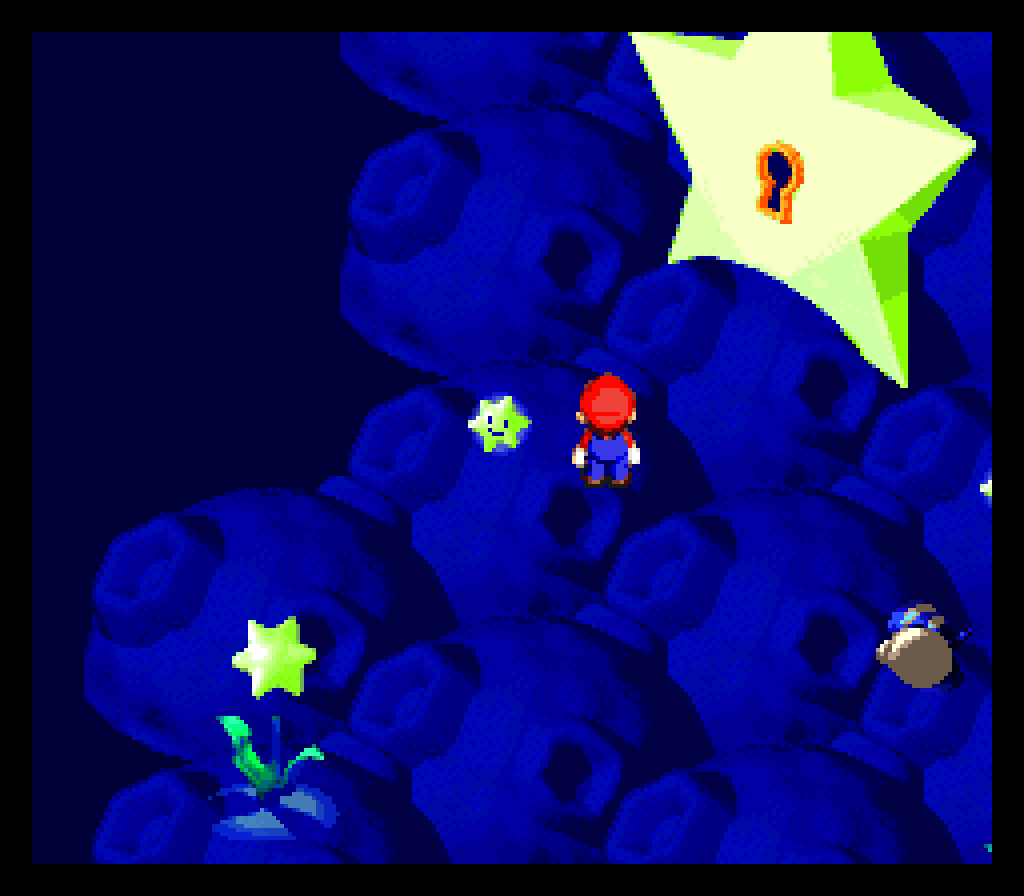
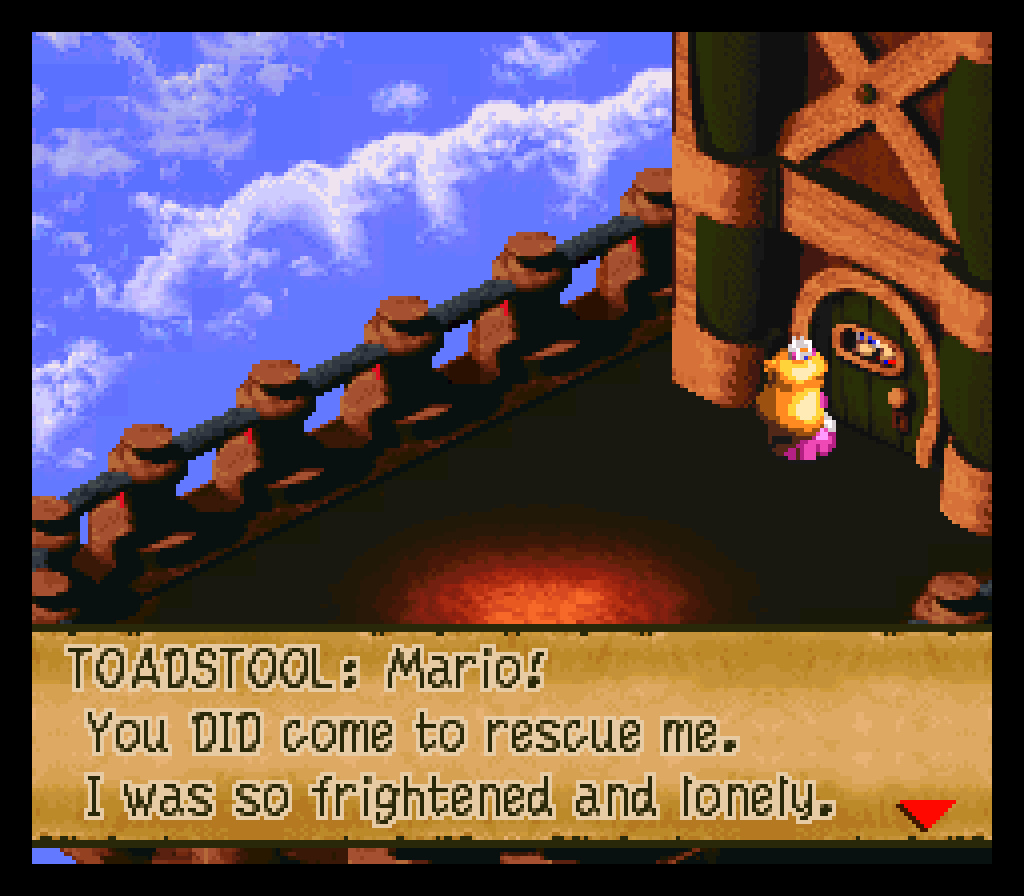
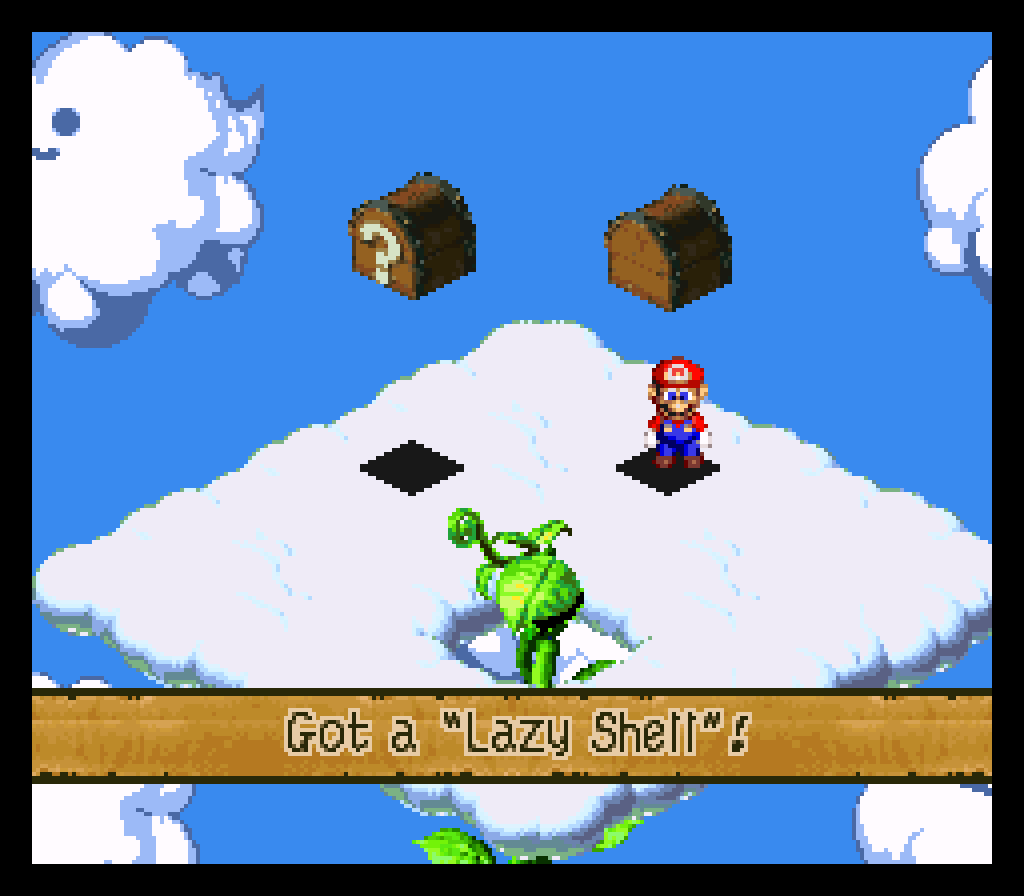
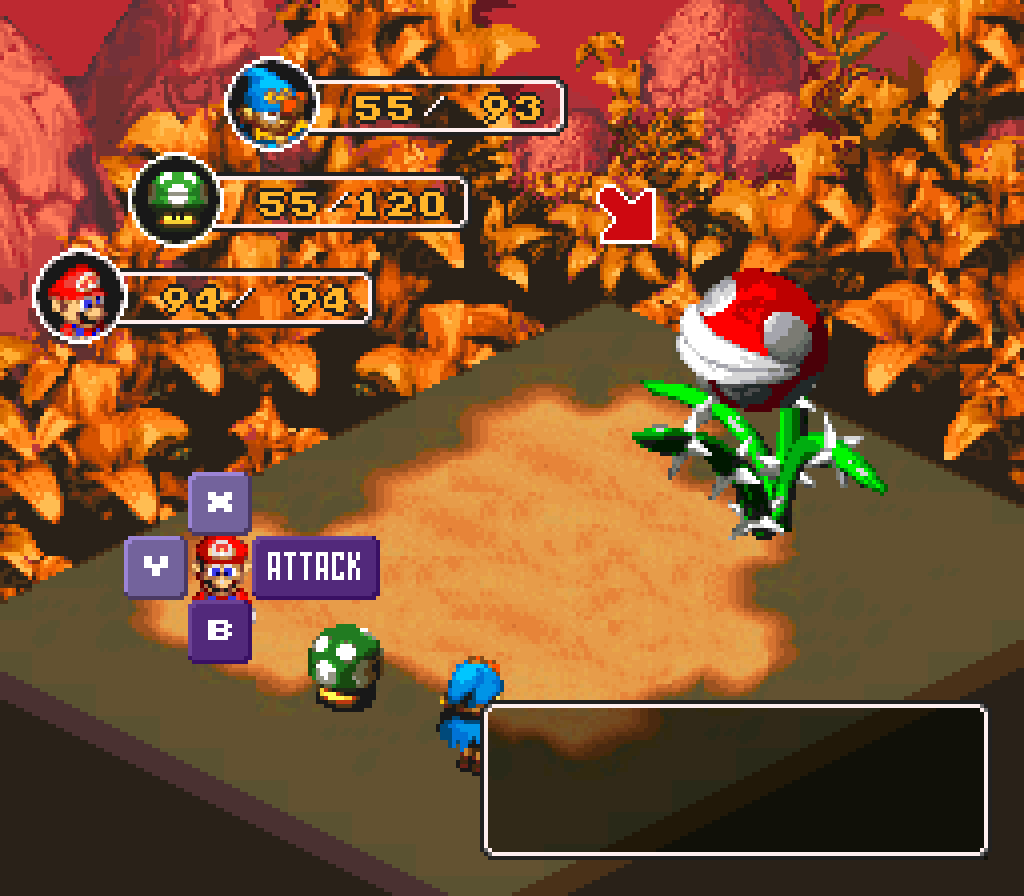
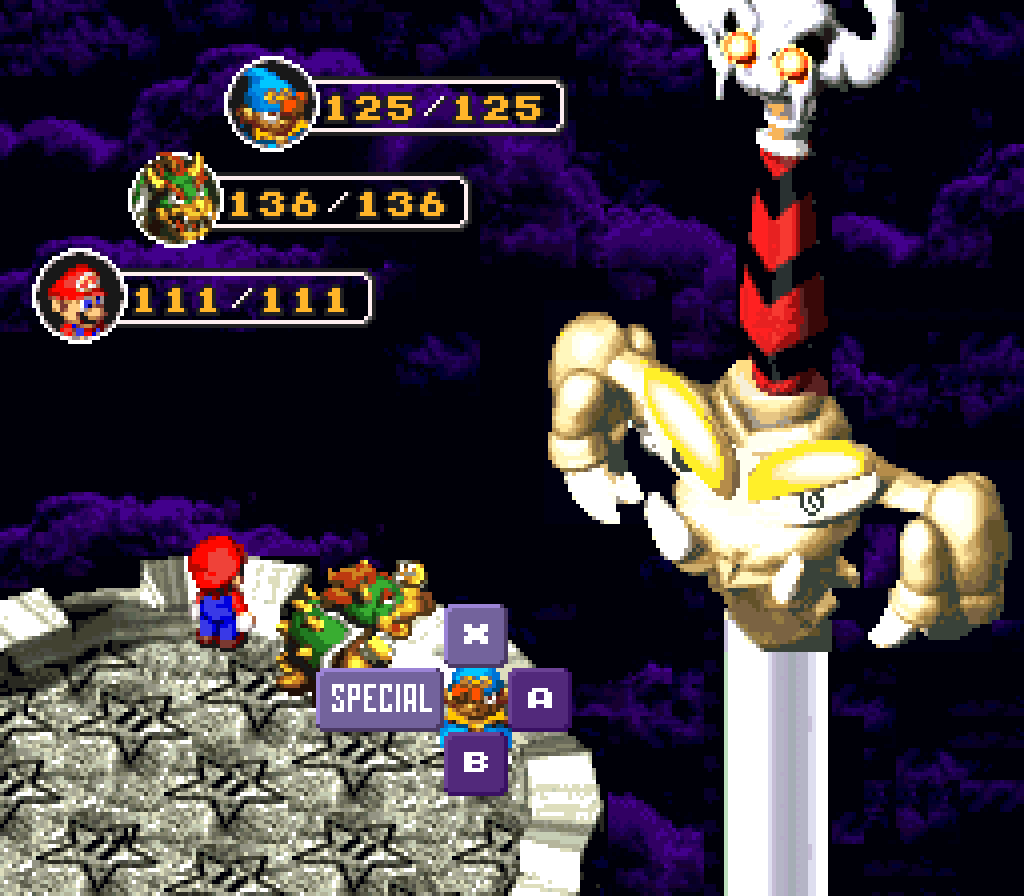
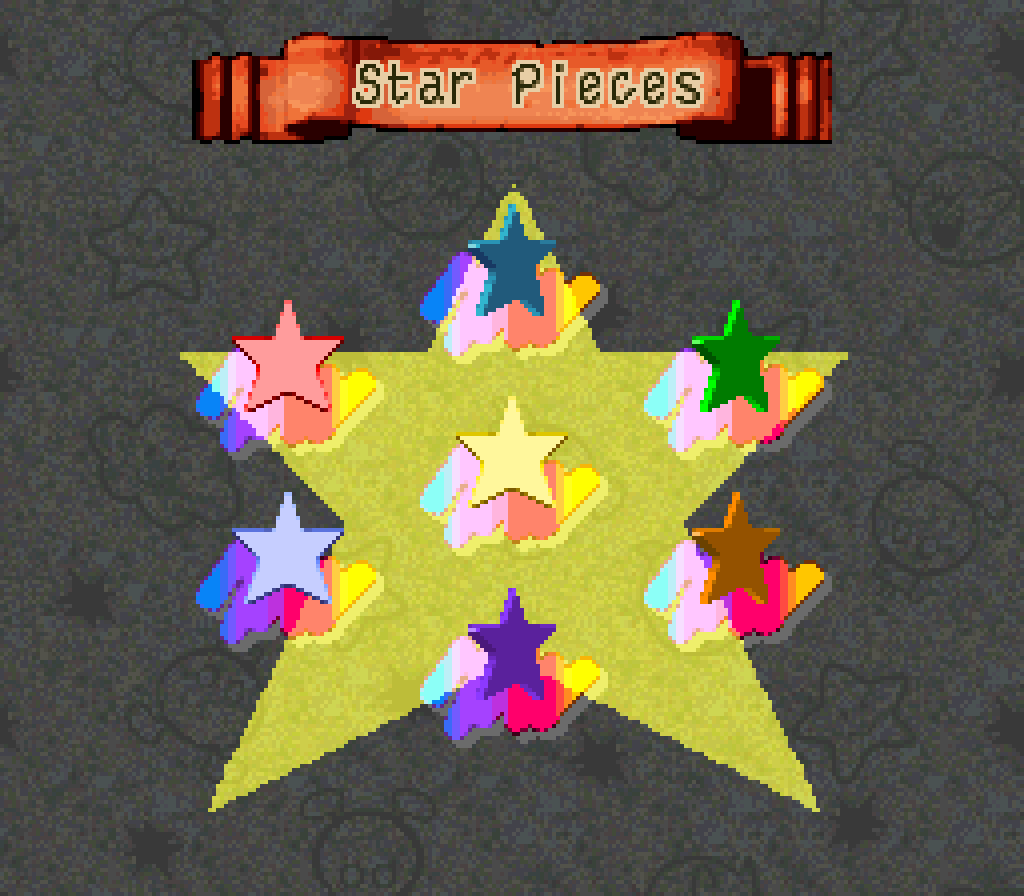
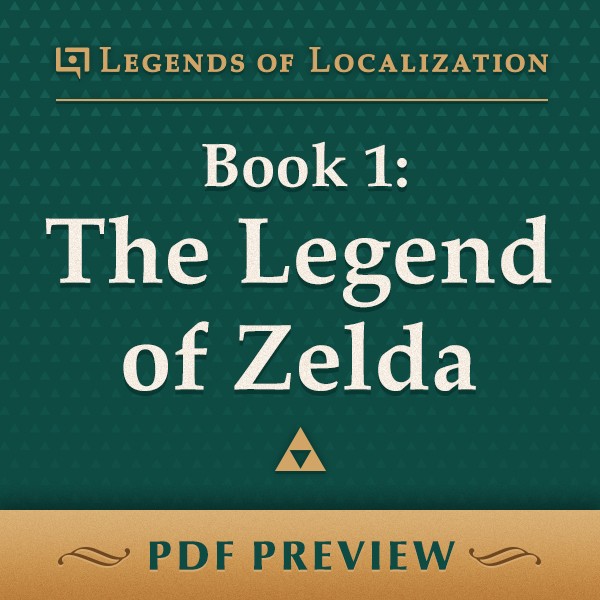
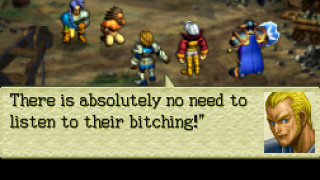

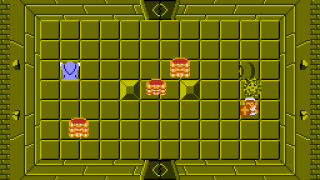
It’s pretty small, but I remember one line of dialogue was changed in the 3DS remake of Ocarina of Time. When Saria becomes a sage and you’re warping away from the Temple of Light after talking to her, she says “I will always be your friend” in the 3DS version. In the original N64 version, she says “Saria will always be your friend”. When I was a kid I always thought this was the game’s 2nd-person narrator telling you this (the one who says “you got the __!” from chests and stuff), and I didn’t realize till much later that Saria probably just talks in 3rd person in the Japanese and they missed it in translation.
Nice, that’s a great example of the kind of stuff I love to investigate. Oh man, I can’t wait until we get around to documenting OoT.
You know, Yahoo! has been around since 1994.
Yes, I’m aware, but I don’t think they were a giant global corporation + household name at the time. They certainly weren’t on Nintendo’s radar either it seems.
Mato, it’s not just the European version of Super Mario RPG that changed Croco’s “bugger” line sadly… They changed it for ALL just to make it one version for all. I was pretty annoyed when I saw that change. At first I thot I just misst it somehow. I was really looking forward to it. It’s a word my granma always used. :/
I just checked and the North American Wii U version *does* include “bugger”. I haven’t checked the SNES Mini version yet though, I don’t have access to the European versions for further verification unfortunately.
EDIT: I checked the US SNES Mini and it still says “bugger” too.
I mean, in British English it’s not just a sexual act but the word has roots in a nationalistic slur against Belgians, so I would guess changing it for the UK was absolutely non-negotiable (possibly for legal reasons). It doesn’t carry the same strong connotations in American English but it can (though I am not aware there is any racist connotation to Americans at all)
I’m British mid-30s and was unaware, as I’m sure most are, of any association with Belgium. If the word has to be removed then it’ll be for the sexual connotation, but it’s fairly mild.
I’m going to assume Starfox 2 was the only game that doesn’t count as “changed,” because technically that was its first-ever official release. (If I’m wrong, though, do tell us which game was left unaltered!)
Actually, looking at this Reddit thread it looks like I might be wrong and that all 21 got changed. In most cases it’ll be code alterations that turn the music off – Nintendo’s SNES emulator basically plays premade audio files instead. After that, color/flashing changes are probably super common too. It’s finding everything else that interests me the most, but it’s hard to research it all.
The Virtual Console release of Startropics replaces all mentions of the word Yo-yo with “Star” since someone realized Yo-yo is actually a trademarked name and didn’t want a lawsuit. Star feels like a weird choice, but I can’t really think of anything better myself.
It’s not as weird as you think, considering the names of the upgrades you get over the course of the game: Shooting Star and the Super Nova.
Likewise, all references to the Tetrads in Zoda’s Revenge were changed to “Blocks”, despite the fact that Tetris blocks are officially known as “Tetrominoes”.
Furthermore, at the end of the game the Chief of Coralcola says “After all, ‘Tetris’ is my middle name” which was changed to “After all, ‘Puzzle’ is my middle name”.
yo-yo hasn’t been trademarked since 1965, it’s totally genericized.
I’m interested in how these changes were made, actually. I’d naively assumed that they just took the original ROMs and embedded them without changing them, and then used them for input into a custom-built emulator. But if changes like these have been made to the text, how are these changes applied? Just they essentially just hack the ROMs to overwrite text and change some flags when necessary? Are these changes applied in memory after an original version of the ROM has already been loaded? I wonder how much reverse-engineering this took and who performed the work.
Yeah, it’s kind of surprising, but apparently they’ve been doing it as far back as the start of the Wii VC. The various VCs appear to be a combination of the original ROMs, config info, and external data patches that get applied at runtime. The SNES Mini takes things one step further and seems to follow that same idea (or they use ROMs pre-applied VC patches, not sure which) and have the emulator also do live patching on top of what changes were already made in the VC releases. It’s kind of a mess and hard to keep track of though.
I recall another instance of the word “Damn” in an otherwise profanity-free game being changed to “Darn”: Mega Man 7 as featured on Mega Man Anniversary Collection for PlayStation 2, GameCube, and Xbox.
Also, the Mega Man X Collection version of X1 had X exclaim “Damn!” before his only line of dialogue in the game (which is right after Zero saves him from Vile).
It’s funny how Capcom made those changes, yet never changed Boomer Kuwanger’s name (which, in Japanese, is a pun based on the Japanese word for stag beetle) for the rereleases of the SNES version of Megaman X. They did change it Maverick Hunter X, though. I guess so many people know him as “Boomer Kuwanger” that they never bothered to make that change
Thought I’d stop by to update y’all that the new Switch remake of Link’s Awakening has fully restored this NPC’s “Yahoos”. Yippee!
Even if they had to change it, I think “wahoo” would have been better than “yippie”. There’s the purely technical reasons (Yippie is an extra character, which could be disastrous in a game with as short a text line as the GBC Zeldas. Wahoo changes only one character and is only a single character change) that alone would justify it.
Here’s another translation change I would like explained.
In Link to the Past, one of the fortune teller’s hints is “Abracadabra alakazam! Inquire about chests at the gossip shop in the Dark World…” in the GBA release and “Abracadabra alakazam! The gossip shop in the Dark World has treasure for the
asking…” in the original SNES release. Fans have interpreted this to mean that this is supposed to be telling you that there is a treasure chest in the blacksmith’s dark-world counterpart ruined hut. I’ve seen one streamer be very confused by this hint and go all over the game for something called “gossip shop”, and “gossip shop” is listed in several Zelda wikis as a particular location.
http://wiki.zeldalegends.net/index.php?title=Gossip_Shop
Of course, “gossip shop” here makes no sense, and it’s not even clear that this is what this hint is about. The game is full of treasure chests, so why should the “gossip shop” refer to this one? Other speculation is that the hint is about storytellers (those dark world places that charge you money for information) and that one of them will tell you something useful.
https://gamefaqs.gamespot.com/boards/711412-the-legend-of-zelda-a-link-between-worlds/66004994
The original text seems to be, “くろまによ~んくろまによ~ん 宝箱のことは闇世界の洞くつに住む、じょうほう屋にきけ~ ”
( http://www.lltvg.com/wiki/The_Legend_of_Zelda:_A_Link_to_the_Past/ja-en#End_of_Sixth_Dungeon_to_End_of_Seventh_Dungeon_.28Wood_Temple.29 )
which seems to be just some generic advice about how there are treasure chests in dark world caves? How did “じょうほう屋” become “gossip shop”?
I’d love to know what was going on here. I’m kind of surprised nobody has tried to unravel this riddle for such a popular game.
Yeah, “gossip shop” for 情報屋 wasn’t a very good translation choice, and all of the other missing details in that English line made it even worse. Something like “Ask the informant/tipster living in a Dark World cave about the treasure chest.” would’ve been closer.
Interestingly, the GBA English script fixes a lot of things and makes lots of other changes, but still keeps the “gossip shop” stuff all as-is.
I’m glad they changed it back to “YAHOO!” although the character is actually called Grandma Ulrira (she’s Grandpa Ulrira’s wife). Oh well.
About “bugger”, that’s slang for homosexual men in Europe so it’s easy to see why they changed it to “pest”.
This is not really new but it is an interesting tidbit about how localization marches on.
In Ogre Battle: the March of the Black Queen, the highest level angelic class, Seraphim, had a white magic attack called “Jihad” and this name was kept for the sequel.
When the SNES Ogre Battle was re-released for the Virtual Console, the attack name was changed to Laser. Granted it does look more like a laser than an abstract concept like jihad, but it’s kind of like if the Final Fantasy staple spell Holy were initially translated correctly, but then were substituted with “Pearl” and “White” upon re-releases of their respective games.
So, who wants to help me? England, UK, 2002 (give or take), SNES (one assumes), and RPG overworld game (I think). The question is, what game did I use to play? Help me find my memory. I am half thinking of a ‘marketplace’ and half thinking of ‘open fields’, finding monsters along the way — but I was 6 at the time, lest we forget. Not sure if the game was A Link to the Past, Breath of Fire II, Secret of Mana, Soul Blazer, or something else! Anybody know which were known/unknown at that time and place?
A marketplace being a central feature in a SNES game that was either an RPG or a Zelda-like game brings Secret of Evermore to mind…